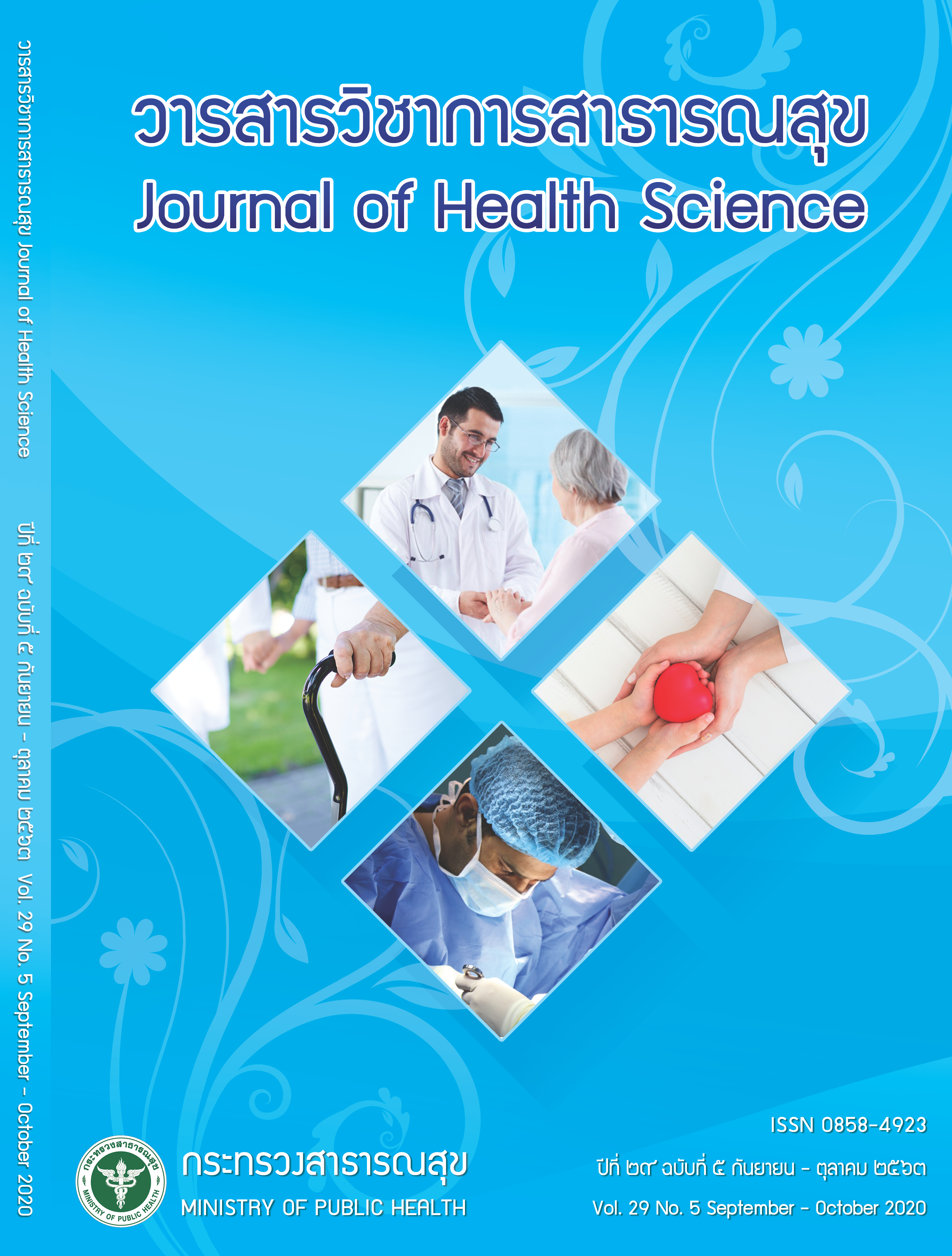A New Comprehensive Approach for Health Promotion Initiatives in Thailand: an Overview of Steps for Funding, Research, Implementation, and Outcome Measurement
Keywords:
health promotion, model; funding, model, funding, research, policy advocacy, implementationAbstract
Health promotion efforts are crucial in Thailand to increase the overall well-being of the Thai people, to prevent and control non-communicable diseases, and ultimately to achieve the Sustainable Development Goals. A new, comprehensive, and stepwise approach to promote the health of the Thai people is proposed. This conceptual framework provides a step-by-step, “how-to” guide which covers everything from funding, to research strategies, to implementation of initiatives, and finally to outcome measures. Its goal is to serve as a guide that Thai citizens and various coalitions can adopt in order to collectively execute health promotion strategies and activities aimed at improving the health of the Thai people. This approach consists of seven steps. The first is the foundation step, which includes the creation of effective funding management and governance systems and fundamental supporting mechanisms, such as health promotion monitoring and evaluation systems. The second is the research step, used to generate knowledge and model development. The third is the persuasion step, which includes policy advocacy, media advocacy, and strategic networking for health promotion activities. The fourth is the adoption step, which involves the decision-making process around implementing effective health promotion strategies and activities. The fifth is the systematic implementation step required for health promotion strategies and activities. The sixth step identifies changes in health behaviours and healthy environments. The seventh step is the health outcomes step, used to measure changes in morbidity, mortality and well-being of the Thai people. This new systematic approach will synergize all stakeholder efforts towards health promotion in Thailand, with the aim of achieving better health for all Thai people, and eventually achieving the Sustainable Development Goals.
Downloads
References
วิชัย เทียนถาวร. 3 ยุคสมัย การสาธารณสุขไทย [อินเทอร์เน็ต]. [สืบค้นเมื่อ 25 เม.ย. 2563]. แหล่งข้อมูล: https://www.matichon.co.th/columnists/news_125602
ปาริชาต ศิวะรักษ์. กำเนิดกองทุน สสส. พิมพ์ครั้งที่ 3. กรุงเทพมหานคร: สำนักงานกองทุนสนับสนุนการสร้างเสริมสุขภาพ; 2556.
Wasi P. Triangle that moves the mountain and health systems reform movement in Thailand. Nonthaburi, Thai-land: Health Systems Research Institute; 2000.
Sornpaisarn B, Rehm J. Strategies used to initiate the first alcohol control law in Thailand: lessons learned for oth-er low- and middle-income countries. International Journal of Drug Policy (in press).
Thamarangsi T. The “triangle that moves the mountain” and Thai alcohol policy development: four case studies. J Contemporary Drug Problems 2009;36(1-2):245-81.
World Health Organization. The triangle that moves the mountain: nine years of Thailand’s National Health Assembly (2008-2016). Geneva: World Health Orga-nization; 2017.
World Health Organization. The Ottawa Charter for Health Promotion [Internet]. [cited 2020 Apr 25]. Available from: https://www.who.int/healthpromotion/confer-ences/previous/ottawa/en/
พระราชบัญญัติภาษีสรรพสามิต พ.ศ. 2560. ราชกิจจา-นุเบกษา เล่มที่ 134, ตอนที่ 32 ก (ลงวันที่ 20 มีนาคม พ.ศ. 2560).
พระราชบัญญัติควบคุมผลิตภัณฑ์ยาสูบ พ.ศ. 2560. ราช- กิจจานุเบกษา เล่มที่ 134, ตอนที่ 39 ก (ลงวันที่ 5 เมษายน พ.ศ. 2560).
พระราชบัญญัติควบคุมเครื่องดื่มแอลกอฮอล์ พ.ศ. 2551. ราชกิจจานุเบกษา เล่มที่ 125, ตอนที่ 33 ก (ลงวันที่ 13 กุมภาพันธ์ พ.ศ. 2551).
พระราชบัญญัติควบคุมการส่งเสริมการตลาดอาหารสำหรับทารกและเด็กเล็ก พ.ศ. 2560. ราชกิจจานุเบกษา เล่มที่ 134, ตอนที่ 72 ก (ลงวันที่ 10 กรกฎาคม พ.ศ. 2560).
พระราชบัญญัติจราจรทางบก พ.ศ. 2522 (ฉบับที่ 12). ราชกิจจานุเบกษา เล่มที่ 136, ตอนที่ 67 ก (ลงวันที่ 22 พฤษภาคม พ.ศ. 2562).
World Health Organization. Milestones in health promo-tion: statement from global conferences. Geneva: World Health Organization; 2009.
World Health Organization. Health in all policies: Hel-sinki statement. Framework for country action. Geneva: World Health Organization; 2014.
World Health Organization. Global Action Plan for the Prevention and Control of Noncommunicable Diseases 2013-2020. Geneva: World Health Organization; 2013.
United Naitons. Knowledge platform: Sustainable Development Goals [Internet]. [cited 2020 Apr 27]. Available from: https://sustainabledevelopment.un.org/?menu=1300
Cecelia Health Marketing. The five stages to successful behavior change [Internet]. 18 April 2019 [cited2020 Apr 27]. Available from: https://www.ceceliahealth.com/blog/2016/1/20/the-five-stages-to-successful-behavior-change
Galbally R, Fidler A, Chowdhury M, Tang KC, Tantivess S. Ten-year review of Thai Health Promotion Foundation: Nov 2001 – Nov 2011. Bangkok: Thai Health Promo-tion Foundation; 2012.
De-Regil LM, Peña-Rosas, JP, Flores-Ayala R, Jefferds MEdS. Development and use of the generic WHO/CDC logic model for vitamin and mineral interventions in public health programmes. Public Health Nutr 2014; 17(3):634-9.
Downloads
Published
How to Cite
Issue
Section
License

This work is licensed under a Creative Commons Attribution-NonCommercial-NoDerivatives 4.0 International License.







